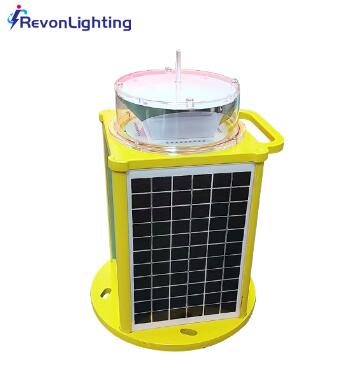Solar obstruction lights are innovative safety devices that utilize solar power to provide enhanced visibility for aviation purposes. These lights are specifically designed to signal potential obstacles, such as tall structures or obstructions, to pilots, ensuring safe navigation, especially during low-visibility conditions. In this article, we will delve into the importance of solar obstruction lights, their benefits, and their applications in aviation safety.
Importance of Solar Obstruction Lights
Solar obstruction lights are of paramount importance in aviation safety as they enhance visibility and alert pilots to potential hazards. These lights emit a bright, highly visible light that can be seen from a distance, ensuring that pilots can identify potential obstacles in their flight path. By providing this crucial visual cue, solar obstruction lights facilitate safe navigation around tall structures, such as communication towers, wind turbines, or buildings, ultimately ensuring the safety of both aircraft and individuals on the ground.

Benefits of Solar Obstruction Lights
Energy Efficiency: Solar obstruction lights harness solar energy, which is a renewable and sustainable energy source. This reduces dependence on traditional power sources and helps to minimize environmental impact.
Cost-Effective: Solar obstruction lights eliminate the need for extensive wiring and electrical connections, which can be expensive to install and maintain. The use of solar power reduces operational costs in the long run.
Easy Installation and Maintenance: Solar obstruction lights are easy to install, requiring minimal infrastructure and no electrical connections. They can be quickly deployed in remote or inaccessible areas, where traditional power sources may be unavailable or impractical.
Reliability: Solar obstruction lights are equipped with batteries to store solar energy, ensuring reliable operation even during cloudy or nighttime conditions. These lights have built-in sensors to automatically activate at dusk and deactivate at dawn, providing 24/7 visibility.
Environmentally Friendly: Solar obstruction lights have a significantly lower carbon footprint compared to lights powered by fossil fuels. They contribute to sustainable development by reducing greenhouse gas emissions and promoting clean energy alternatives.
| 1 | solar low intensity light |
| 2 | solar type B light |
| 3 | solar type C light |
Applications of Solar Obstruction Lights
Solar obstruction lights find a wide range of applications in aviation safety. These lights are commonly used on various structures, including communication towers, wind turbines, tall buildings, and cranes, to ensure their visibility to pilots. They are also utilized on offshore platforms, bridges, and other structures that may pose obstacles to aircraft. In addition, solar obstruction lights are suitable for temporary or emergency installations, such as construction sites or temporary structures, where rapid deployment and easy removal are essential.
Conclusion
Solar obstruction lights offer a sustainable and efficient solution for enhancing aviation safety. By harnessing the power of the sun, these lights provide enhanced visibility, ensuring pilots can navigate safely around obstacles. Their energy efficiency, cost-effectiveness, and ease of installation make them an ideal choice for various applications, including communication towers, wind turbines, and other tall structures. As we continue to prioritize sustainability and environmental stewardship, solar obstruction lights play a crucial role in promoting aviation safety while minimizing our carbon footprint.